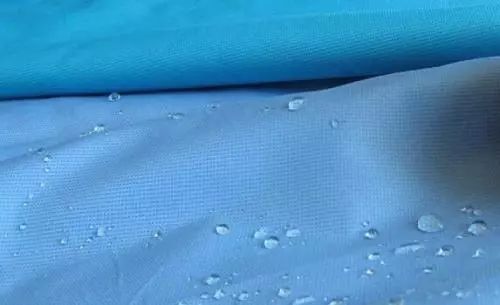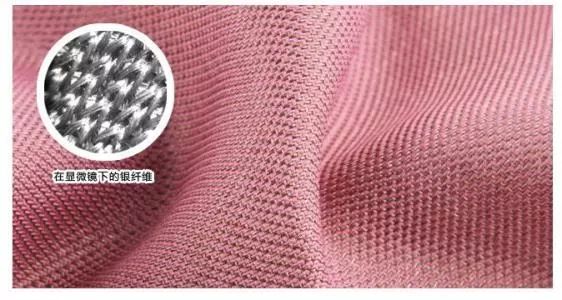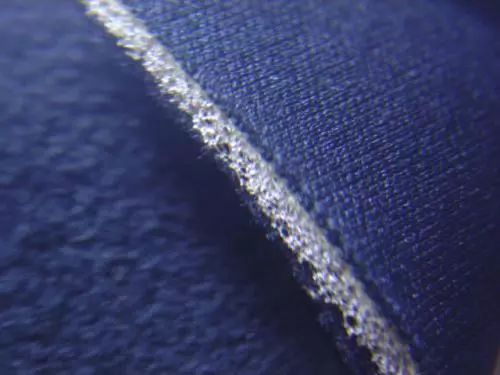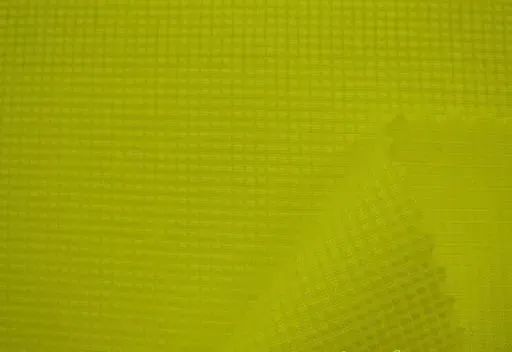Functional fabrics: At the fabric level, functional textile finishing agents are used to solve the various functional needs of customers. These needs include: antibacterial, anti-mite, three-proof, anti-UV, etc. The fabrics are mostly used in outdoor clothing, maternal and infant clothing, home textiles and other fabric fields.
1. Highly waterproof, moisture-proof and breathable fabric

Waterproof and breathable fabrics are also called “breathable fabrics” ” is a fabric that is coated or laminated with PU and combines waterproof, moisture-permeable, windproof and warm-keeping properties. It can not only resist the invasion of rain and cold wind, but also allow the human body’s sweat and perspiration to be discharged in time. Thereby keeping the human body dry and warm and comfortable. According to the production process, it is mainly divided into the following three types: French coating: refers to applying a layer of coating solution on the surface of the fabric. The non-solvent or solvent is evaporated successively by the temperature at different stages, and the coating agent is in a porous or non-porous form. It precipitates and forms a microporous or hydrophilic non-porous film on the fabric to achieve waterproof and moisture-permeable functions. Including “microporous” coating and “non-porous hydrophilic” coating, the coating process is divided into three coating processes: direct coating method, transfer coating method, and foam coating method.
1) Coating method: Also known as coagulation coating, it refers to using DMF (dimethylformamide) to dissolve polyurethane (PU) into a solution on the base fabric, and then immersing it in non-solvent water. Water is miscible with DMF solvent but has no affinity with PU resin. Therefore, water can replace DMF in the wet coating film and reduce its concentration. After drying at a certain temperature, the solvent evaporates and the polyurethane in the dissolved state is (PU) will condense to form a microporous film. This prevents water from passing through and allows water vapor to pass through.
2) Composite method: refers to the microporous film or hydrophilic non-porous film with waterproof and moisture-permeable function, which is combined with the fabric through a lamination process using a special adhesive to form a waterproof film. Breathable fabrics and film varieties include: microporous PTFE membrane (polytetrafluoroethylene membrane), hydrophilic polyurethane nonporous or microporous TPU membrane, and hydrophilic polyester polyether copolymer nonporous TPU membrane.
2. High visibility fluorescent fabric

Fluorescent fabric refers to ordinary Fabrics that have a strong reflective effect after being fluorescently dyed or coated. The use of fluorescent fabrics can strongly reflect light to extremely distant targets or targets in the dark, thus serving as a good warning and safety precaution.
3. Antistatic and conductive fabrics

Textiles (especially chemical fibers ) can easily generate static electricity due to friction during production, processing and use. Its charge can easily attract dust to attach, entangle clothes and cause discomfort to the human body. Higher electrostatic voltage can also harm the human body and even cause items to catch fire or explode. The antistatic processing method mainly uses antistatic finishing agents, which can be completed during the dyeing process, or can be solved by adding antistatic additives to the coating. With the development of science and technology, carbon-containing composite organic conductive fibers (conductive filaments) have been developed and interwoven with ordinary fibers into blends and effectively finished, so that the fabric has persistent conductive properties. This kind of fabric is called conductive fabric (Conductive fabric).
4. Composite fabric

Composite fabric is a high-end functional The fabric has the functions of windproof and warm, friction resistance, high waterproof, high air permeability and moisture permeability (SATRA), acid and alkali resistance, etc. Especially TPU and PTFE composite fabrics with waterproof and moisture permeable functions are more waterproof and breathable than ordinary fabrics. It has many advantages such as soft hand feel, strong peeling fastness, and tear resistance. The main composite fabrics are:
(1) Steam-permeable and moisture-permeable (SATRA) composite: two-layer composite: fabric + PU/TPU/PTF; three-layer composite: fabric + PU/TPU/PTFE + lining
(2) PVC composite: fabric + PVC
(3) Ordinary composite fabric: fabric + lining Features: high waterproof, breathable and moisture-permeable (SATRA), windproof and warm, durable Aging, anti-freeze, anti-friction. Widely used in: mountaineering clothing, ski clothing, sailing clothing, golf clothing, military uniforms, police uniforms, field work clothing, etc.
5. Anti-UV fabric

The amount of solar radiation that reaches the earth’s surface Ultraviolet radiation can be divided into the following three parts: long-wavelength ultraviolet rays-UVA (wavelength 315~400mm), medium-wavelength ultraviolet rays-UVB (wavelength 280~315mm), short-wavelength ultraviolet rays-UVC (wavelength 180~280mm). UVA injection into human skin can activate melanin in the skin, darken the skin, and accelerate skin aging. When the skin receives a large amount of excessive UVB, it will produce erythema, blisters, and cause burns; excessive UVC radiation can cause skin cancer.
Ultraviolet-resistant fabrics can effectively prevent ultraviolet radiation from radiating to the skin. When a beam containing ultraviolet rays irradiates the ultraviolet-resistant fabric, the fabric has good shielding properties.It has UV-blocking effect, so it can block more than 95% of the ultraviolet rays in the beam outside the fabric, thereby effectively preventing ultraviolet rays from invading human skin. The lower the UV transmittance of the fabric, the better the UV resistance of the fabric.






